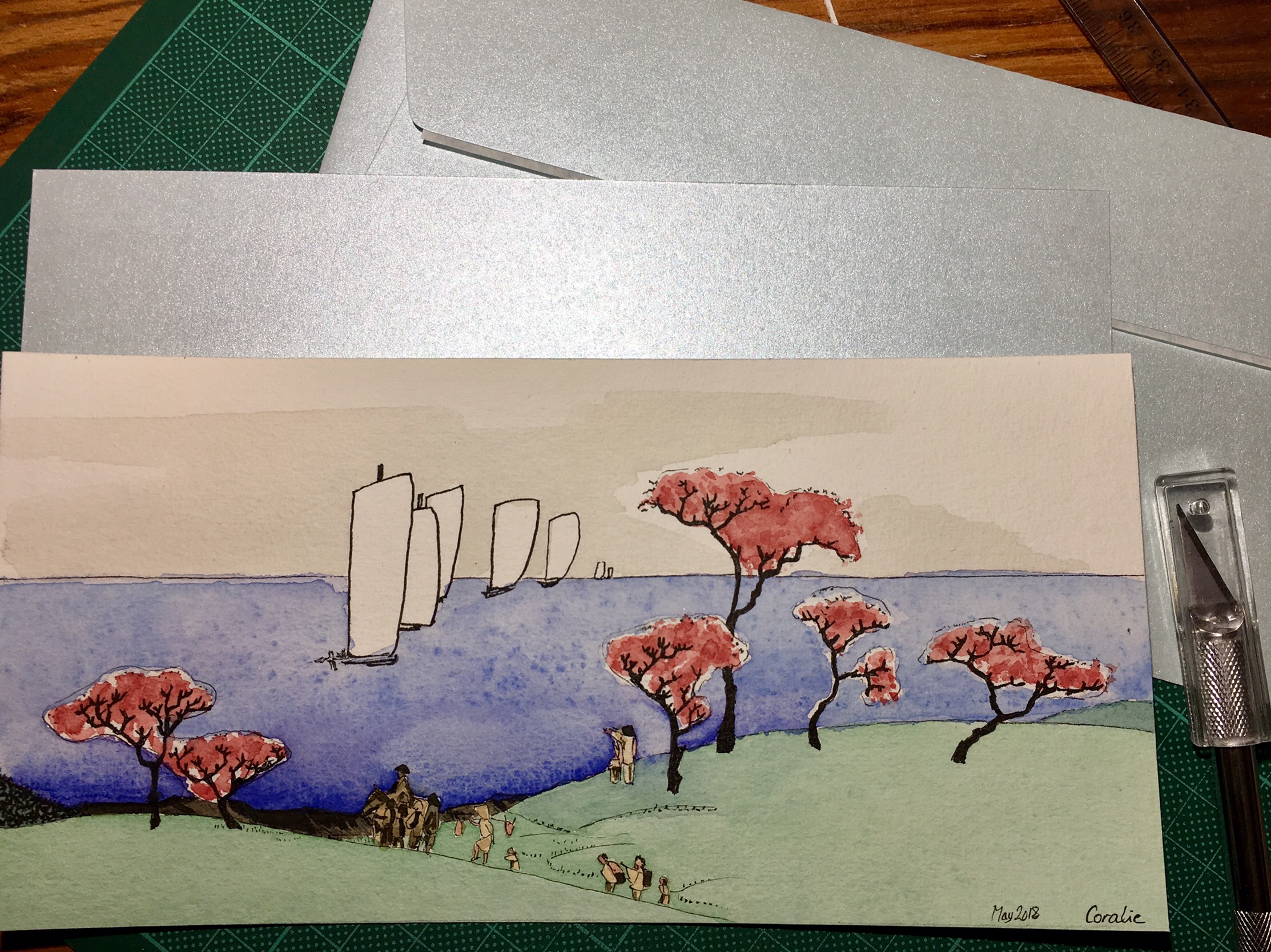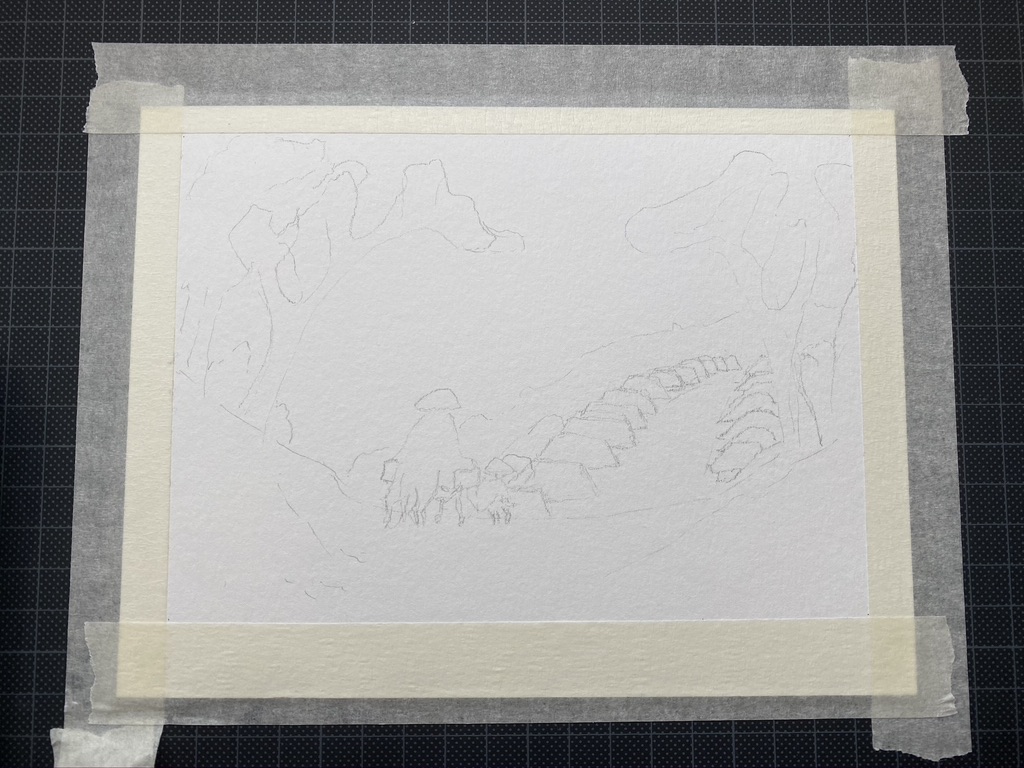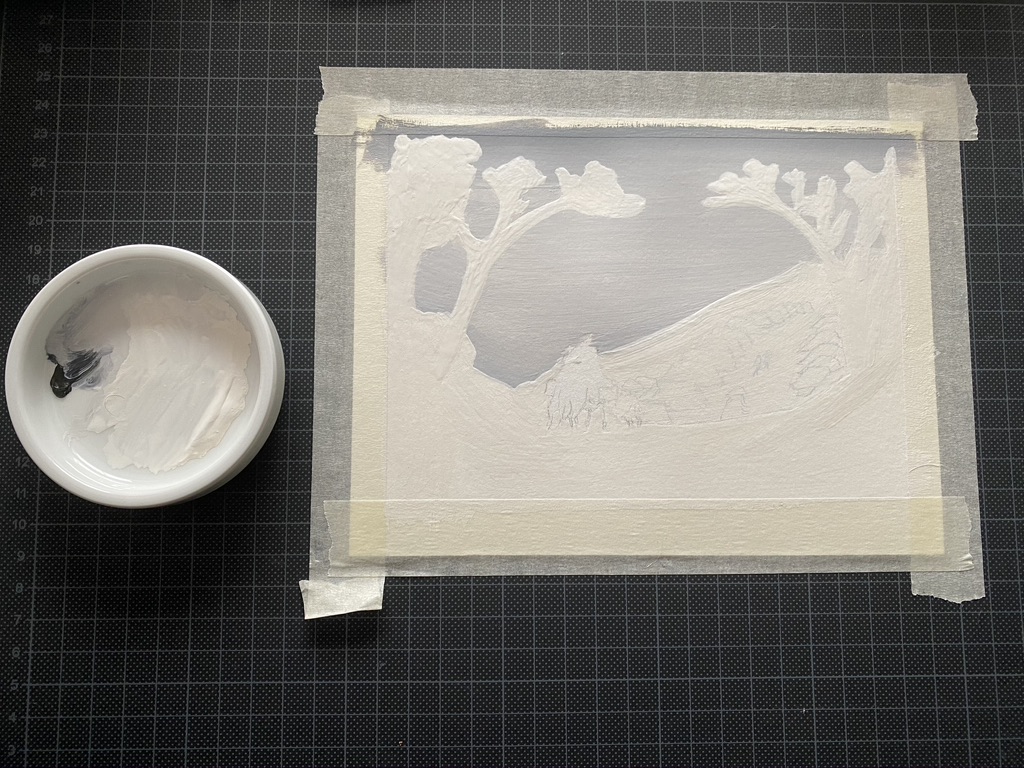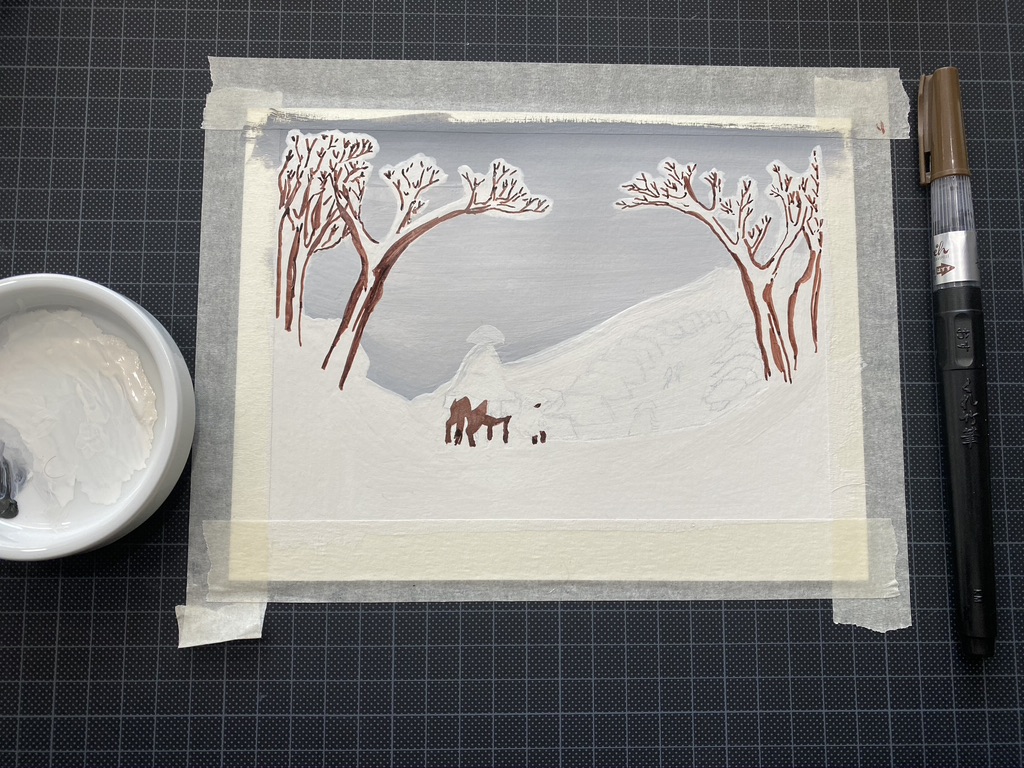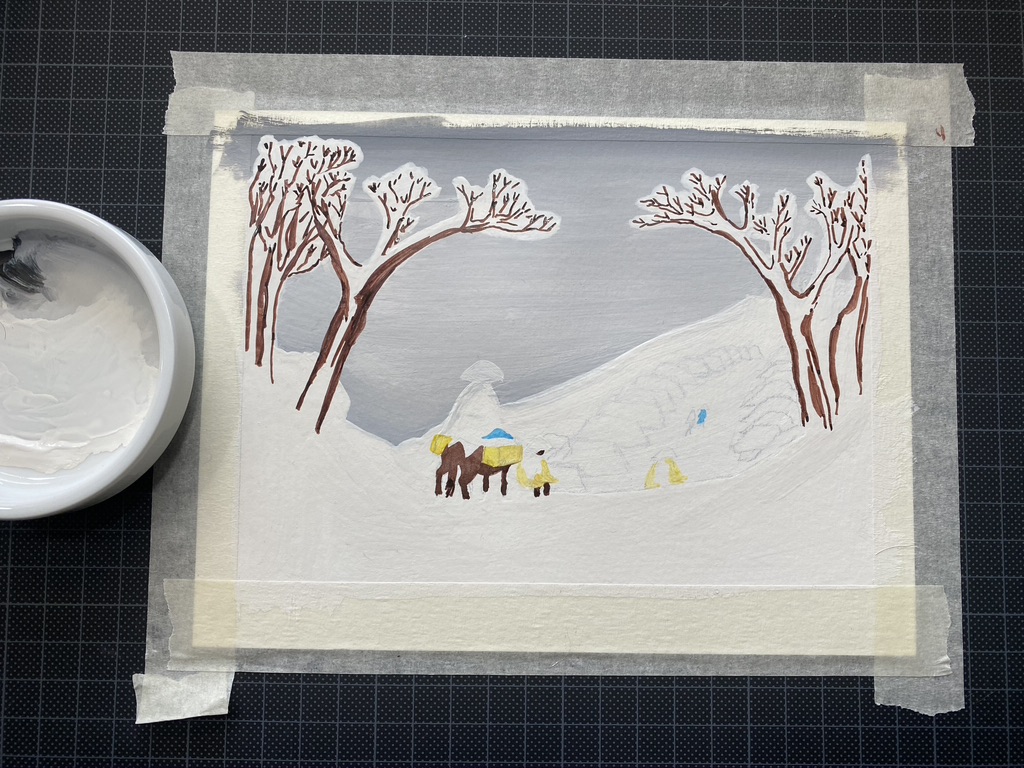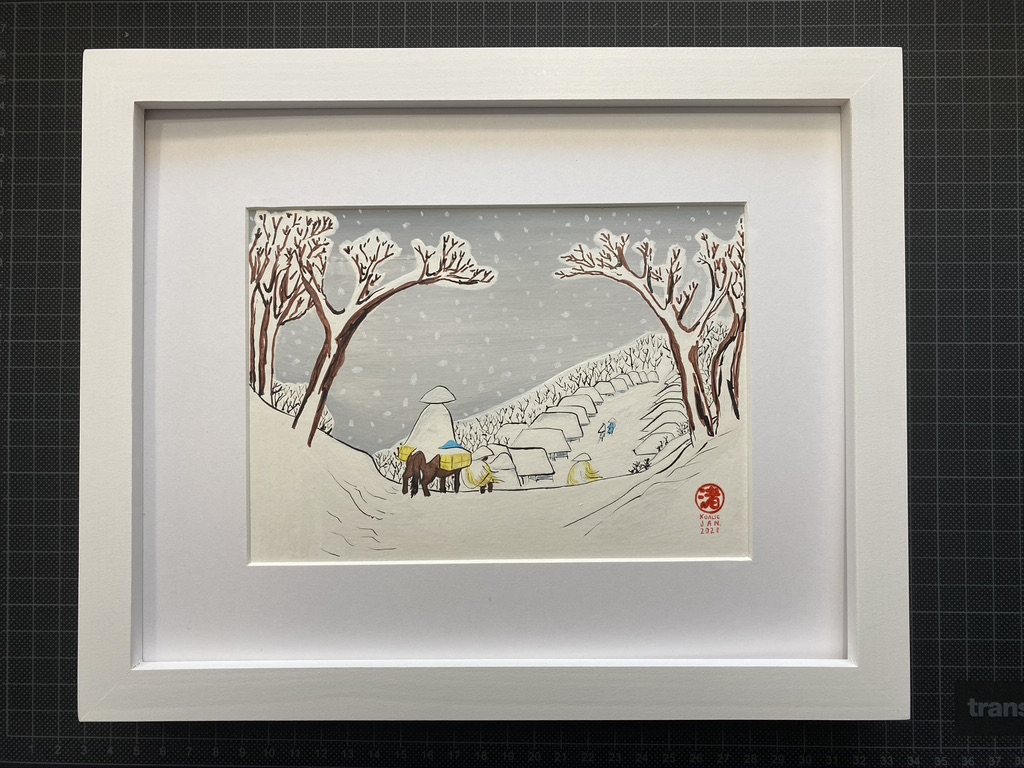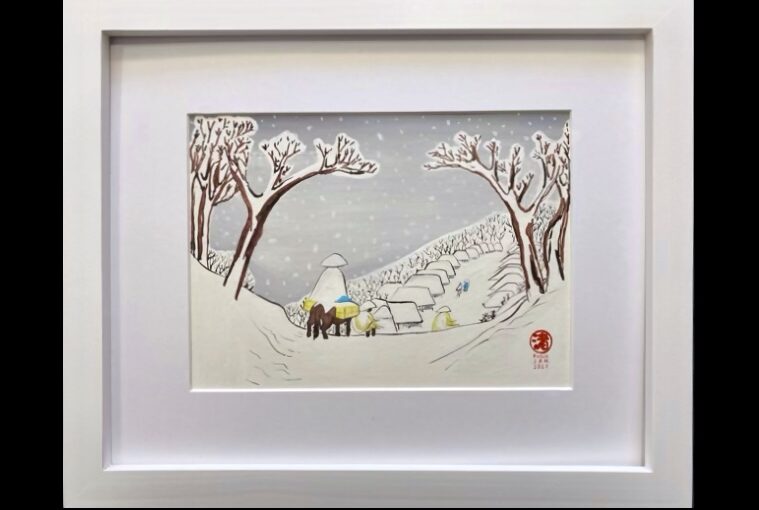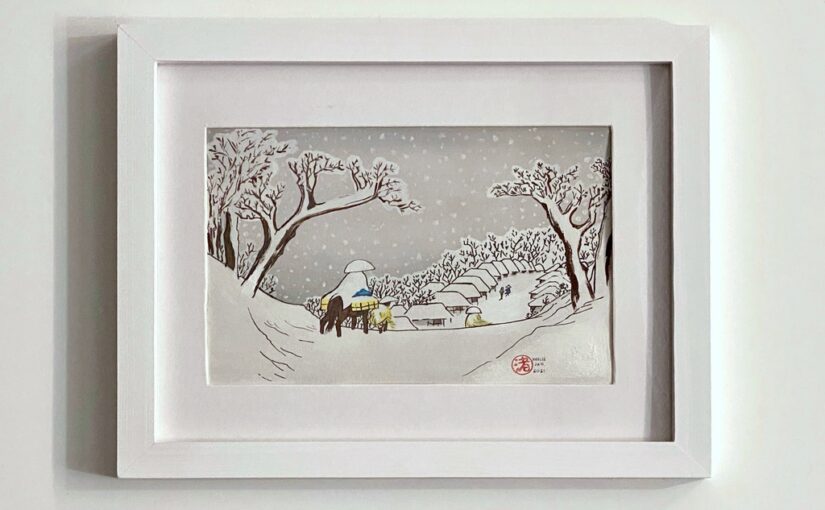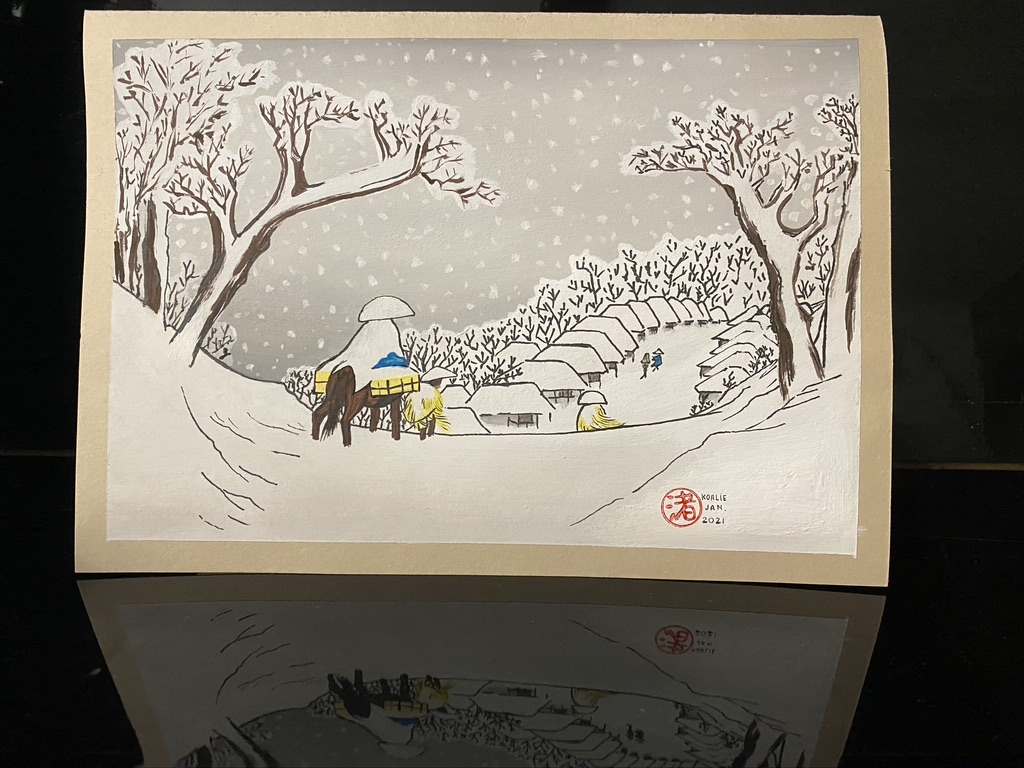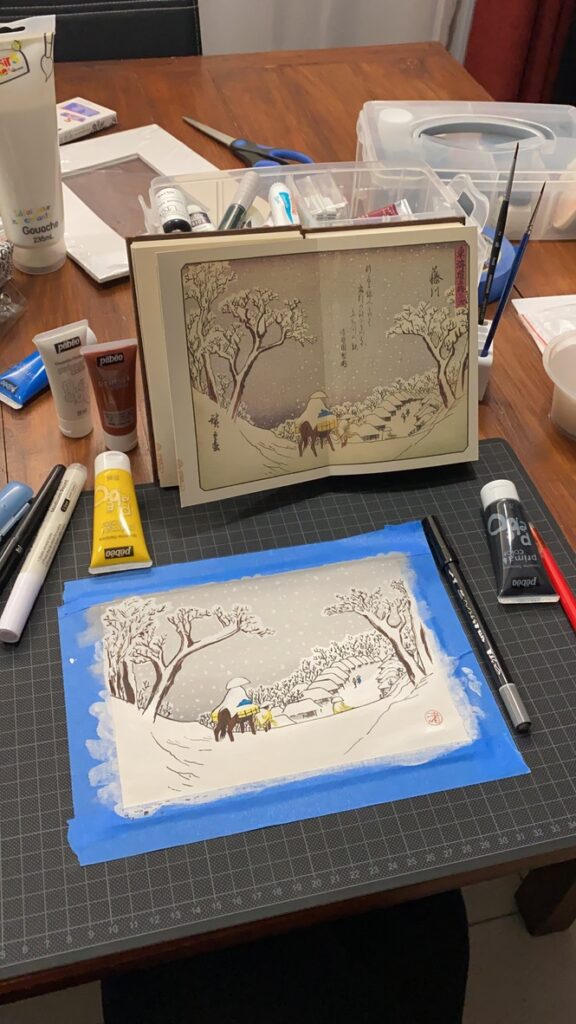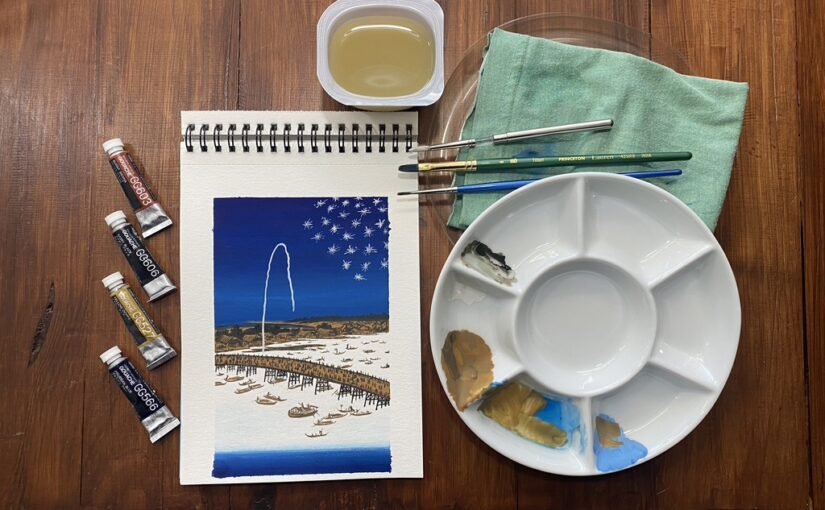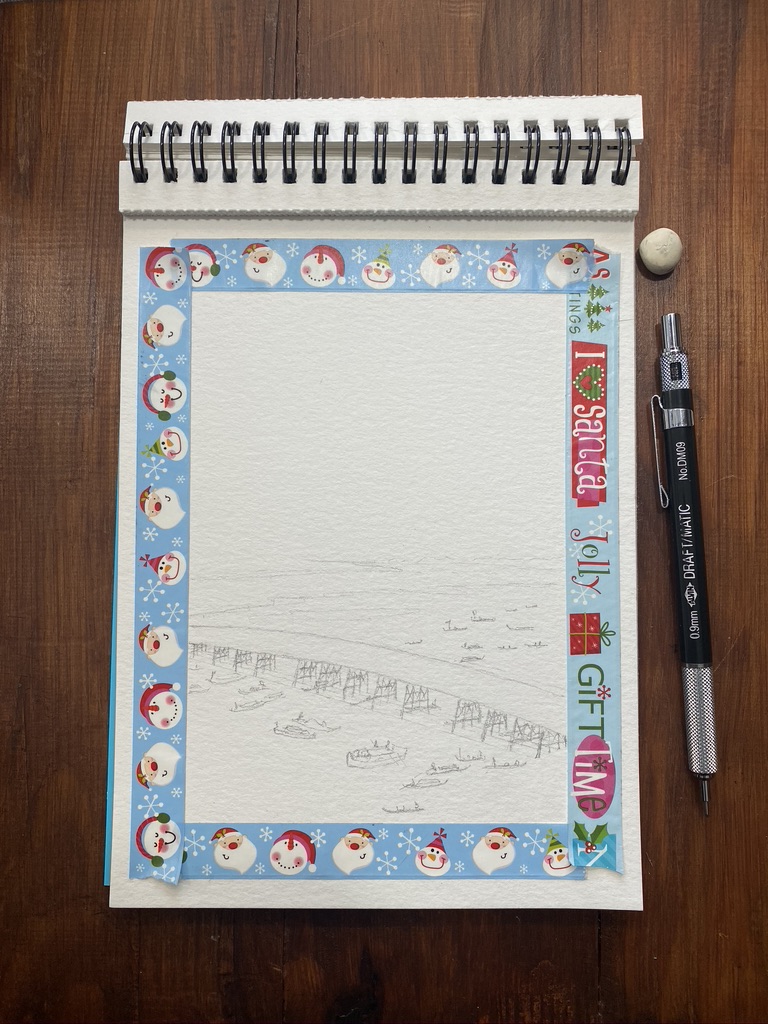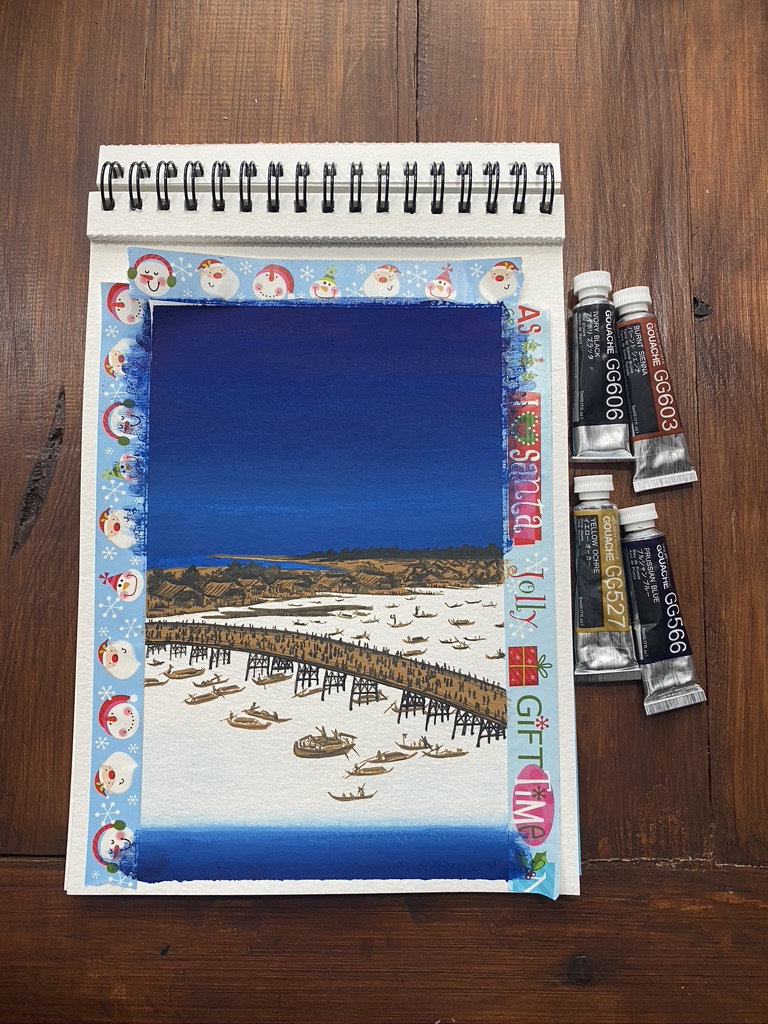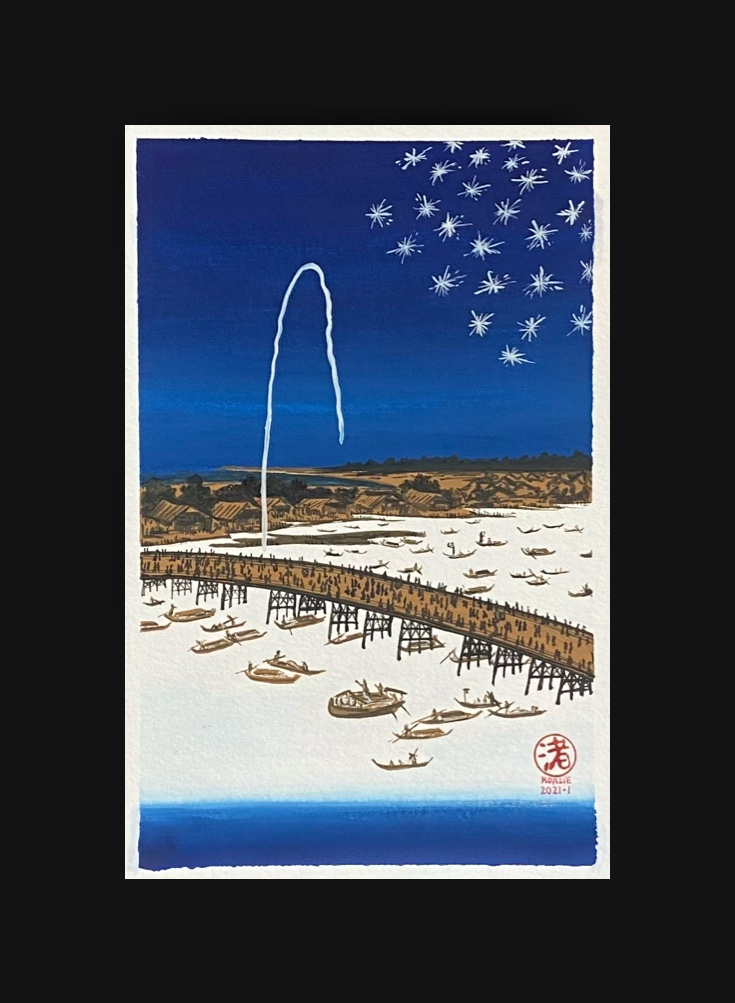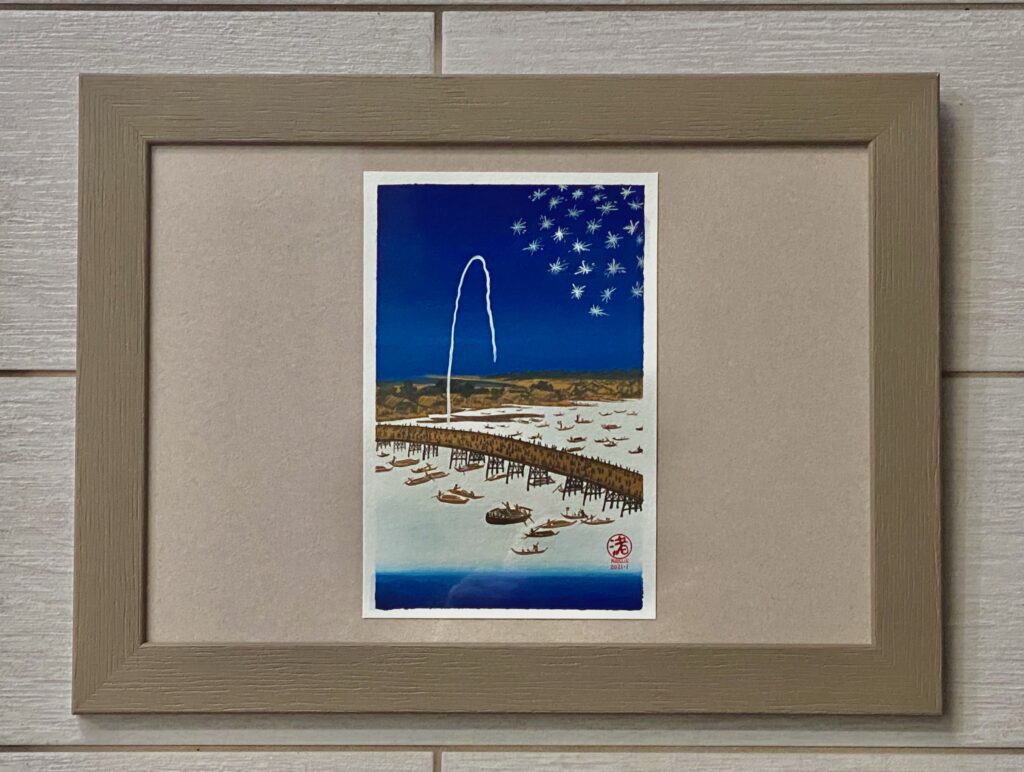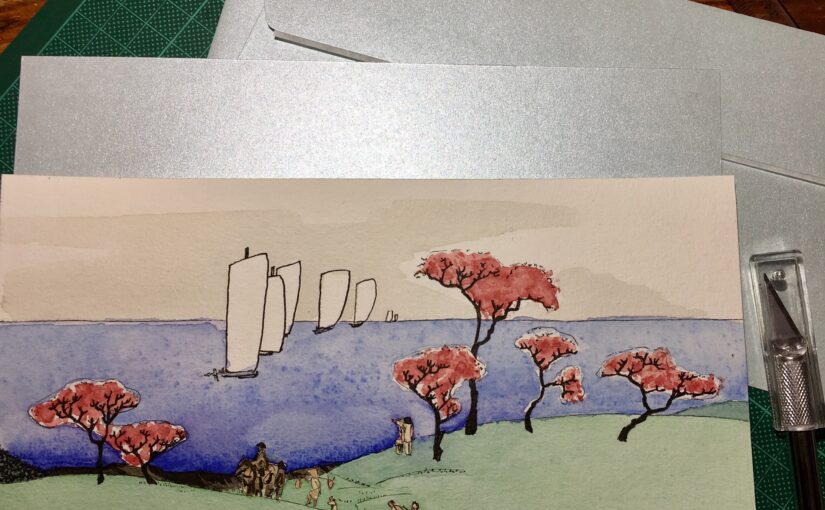This is Cherry Trees at Goten Hill, from the series Twelve Views of Edo, done around 1835 by Hiroshige:
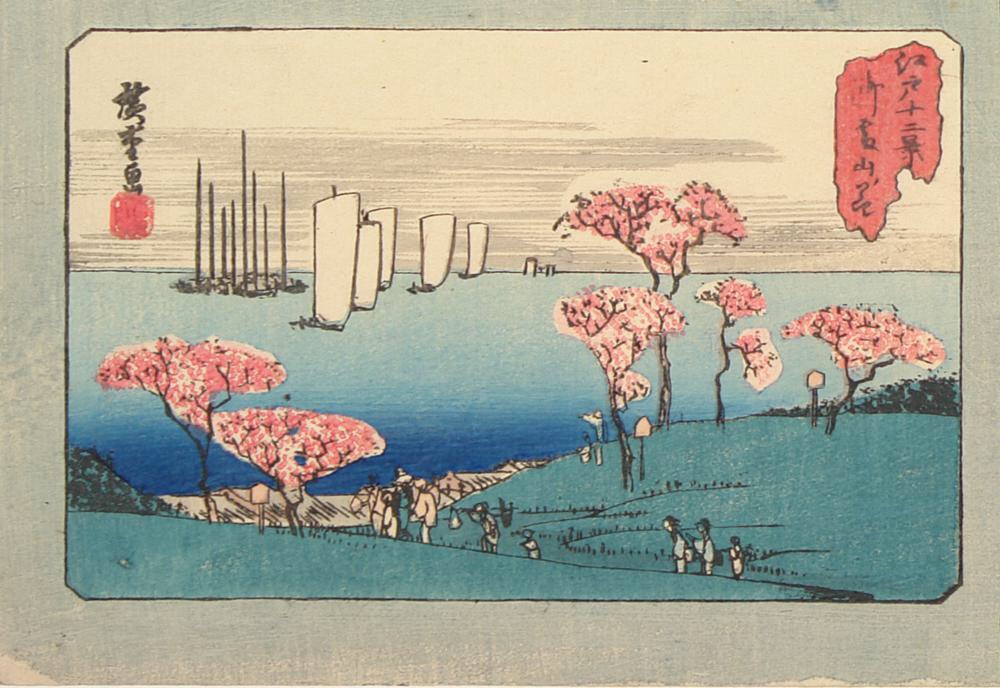
After sketching in pencil, I used a 0.05 mm and 0.2 mm (for the closest sailboats) Uni-ball pin pen to create the outline:


Then I used watercolor. Light grey for the sky, green for the grassy hill:

I added the roofs of wooden shacks right behind the hill, as I decided I wanted them. Then I continued painting, adding burnt sienna to my grey mix for the roofs, and using a wash of Prussian blue for the sea:

I darkened the sienna and grey mix to add contrast to the roofs, started to paint the figures in grey and light ochre. For the cherry blossom, I used alizarin crimson:
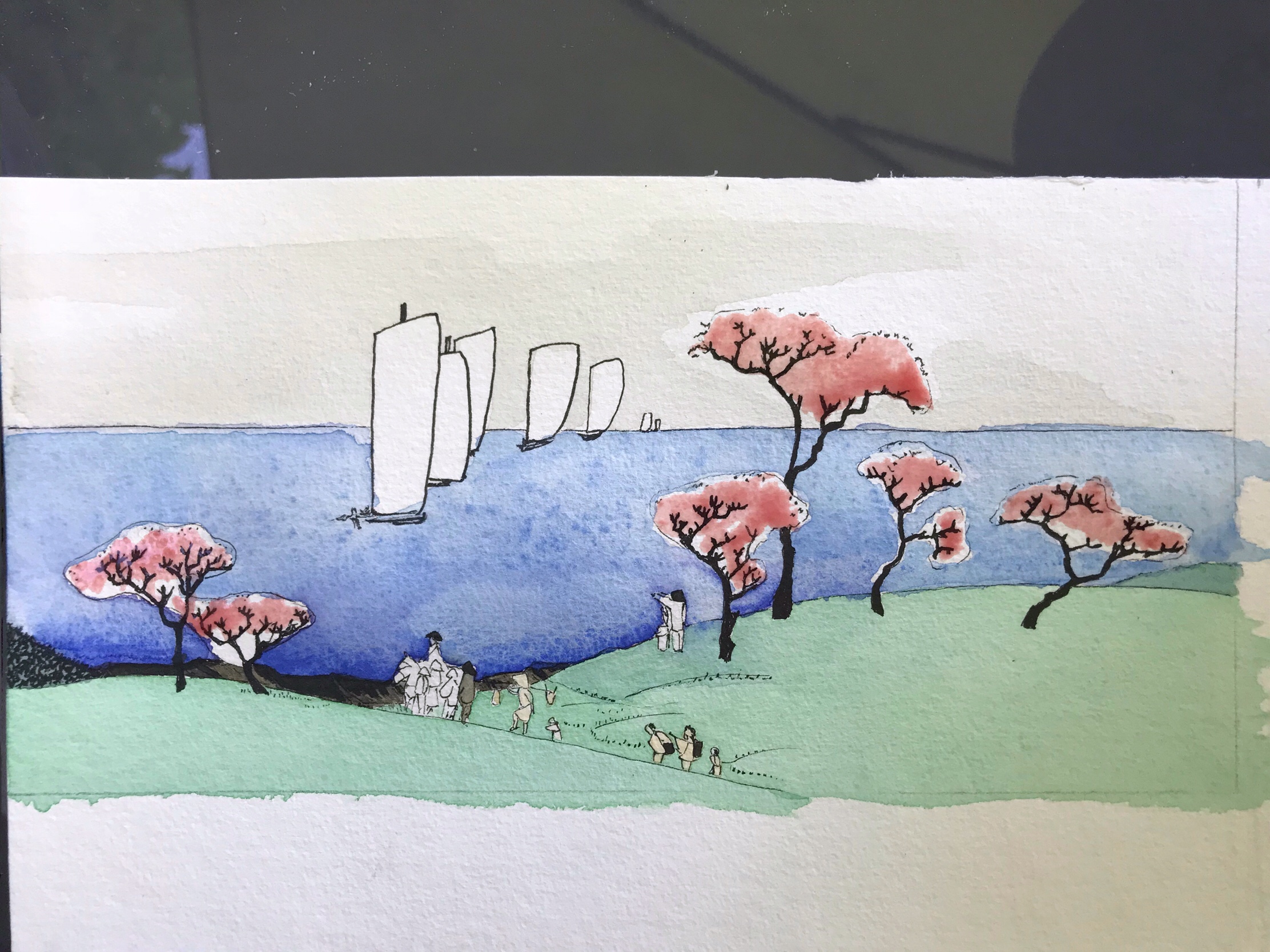
I ended up applying too much dark sienna to the roofs, that I couldn’t fix and darkened the figures as well. More alizarin crimson for contrast in the blossoms, and I was done:

Finally I cut it and taped it to a metallic blue card, and was ready to write the birthday card for a friend:
